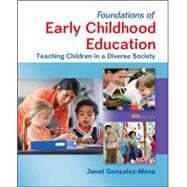
What is included with this book?
The Value of Reflective Practice 6
A Multicultural Perspective 7
A Holistic Approach 7
Professionalism 9
Brain Research 30
Legal Responsibilities 32
Focusing on Individuals and the Group 44
A Crash Course in Guidance 46
Conflict as a Safety Issue 51
Risk Taking as a Safety Measure 54
Helping Children Learn from Their Experiences 54
Developmental Appropriateness 55
Maintenance as Prevention 56
Sanitation Procedures 56
Program Policies and Procedures for Health and Safety 57
Stress and Frustration as Health and Safety Issues 58
Listening and Giving Feedback Are Valuable to Communication 66
Listening and Responding to Different Situations 68
Ask Real Questions, Not Rhetorical Ones 75
Validate Feelings and Perceptions Instead of Discounting Them 75
Address Uncomfortable Situations Instead of Ignoring the Obvious 76
Be Congruent; Avoid Incongruence 77
Watch Out for Double-Bind Messages 78
Use Redirection Instead of Distraction 78
Be Sensitive About Questioning Children 81
The Teacher as Director and Star 89
The Teacher as Responder, Protector, and Facilitator 90
Focus on Inclusion: Making Play Available and Appropriate for All Children 94
Playing to Get Smart 97
Is Play Always Fun? 97
How Does Play Differ from Work? 98
Types of Play—Cognitive and Social 98
Benefits of Play 102
Adult Attitudes Toward Work and Their Effect on Children 104
Children’s Observations of Adults at Work 105
The Project Approach to Learning 107
The Adult as Observer 107
The Adult as Stage Manager 109
The Adult as Teacher 110
The Adult as Encourager 112
What’s Wrong with Punishment? 124
Side Effects of Punishment 127
Time-Out 129
Learning from Consequences 130
Setting Limits 130
Redirection 135
Teaching Children to Express Their Feelings 135
Modeling Prosocial Behaviors 136
Focus on Inclusion: Children with Special Needs 140
Seeking Information 152
Recognizing Alternatives 154
Considering Consequences 156
The Many Roots of Violence 157
Modeling Virtue 159
Modeling Power 160
Modeling Significance 162
Modeling Competence 164
Reflective Practice and The Importance of Observation 169
Creating an Emergent Curriculum 170
Being Sensitive to Cultural Diversity 183
Recognizing Some Differences in the Way Adults Approach Problems 183
The Importance of Being Authentic 186
Handling Adult Disagreements Through Dialoguing 187
Teachers Dialoguing: An Example 188
Making Families Feel Part of the Program 192
Honoring Diversity 193
Focus on Inclusion: A Special Kind of Partnership 194
Recognizing That Parents’ and Providers’ Roles Are Different 195
Handling Conflicts with Parents 196
Facilitating Communication with Families 203
Supporting Families 204
Focus on Inclusion: Modifying the Environment for Special Needs 217
Physical-Care Centers 218
Infant Play Areas 220
Interest Centers 221
Gross-Motor Learning Spaces 222
“Dimensions” 223
Space 225
How Much Should There Be to Do? 226
Circulation Patterns 226
Balance 228
Ensuring Developmental Appropriateness 230
Providing Protection 232
Focus on Inclusion: Safe Environments for All 233
Assessing the Environment for Safety 234
Sanitation and Cleanliness 234
Individuality 237
Independence and Interdependence 237
Cooperation 237
Authenticity 239
The Outdoors and Nature 240
Exploration 241
Aesthetics 242
Full-Day Child Care Center 242
Half-Day Parent Co-op 243
Half-Day Head Start Preschool 243
School-Age Child Care 243
Family Child Care Home 245
Kindergarten and Primary Programs 245
Respect 250
Continuity 255
Focus on Inclusion: A Feeling of Belonging 256
The Child’s Home Culture 261
Synchronous Interactions 278
Attachment 280
Feeding 281
Toileting 284
Resting 286
Grooming and Dressing 288
Focus on Inclusion: Adapting Routines for Children with Special Needs 288
Transitions 290
Group Time 295
Young Infants 306
Mobile Infants 309
Toddlers 311
Two-Year-Olds 314
Three-Year-Olds 316
Four-Year-Olds 318
Five-Year-Olds 321
School-Age Children 323